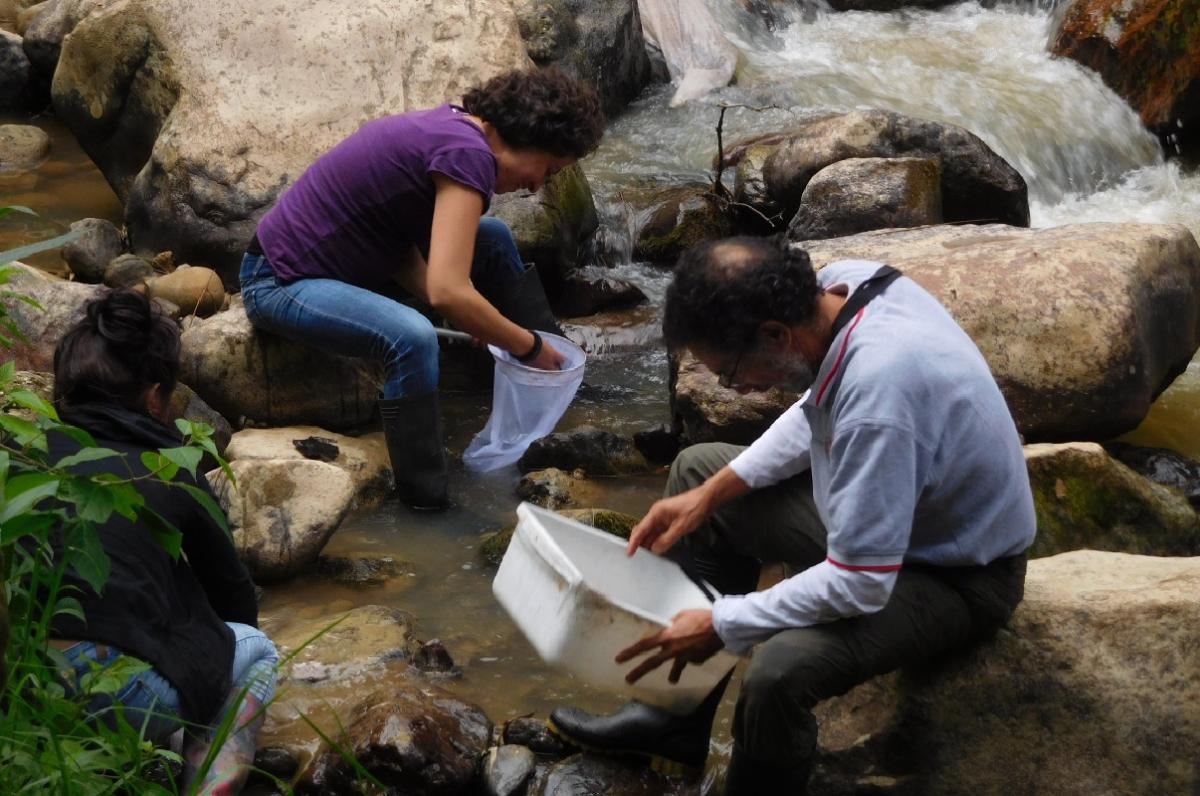Unique insects in unique ecosystems: Examples of Diptera, Trichoptera and Lepidoptera of the Páramos in Colombia
The Andes slopes at over 3000 meters altitude are covered with fog. The temperatures are low and yet a small group of people boots into a stream in the drizzle as if they wanted to cool down after the arduous ascent. Instead they scratch the ground with finely wetted nets between the boulders.
Efficient excursions
Today, the German-Colombian team is collecting the larvae of non-biting midges and caddis flies that develop in the water of the cold and clear mountain streams. Mostly, however, they target the adult animals, including small micro-moths found here, which they catch during the day with hand nets and in the tent-like Malaise-traps and at night with light traps. All three groups of insects have one thing in common: their biodiversity in the Colombian Andes is largely unexplored.
"There is only fragmentary information about the insect fauna of the Páramos," says Wolfram Mey, who heads the project together with a colleague from the Colombian National University in Bogotá. The term "Páramo" refers to a temperate form of vegetation in the heights of the Andes in Venezuela, Colombia, and Ecuador . The areas lie above the forest line and have their own flora and fauna.
Mey travelled five times to Colombia for about three weeks each, most recently in February 2019, to collect insects in the study area in the Cordillera Oriental east of Bogotá. The excursions were fruitful: three scientific articles on non-biting midges, micro- and macromoths and caddis flies have been published, and three further articles are in preparation, says Mey. However, this is not the end of the analysis.
New species
Nine of the 18 species of caddis flies that the researchers found in a stream have not yet been described. "The majority of our catches are unknown," says Mey. In order to identify these animals correctly, they must be compared with descriptions in the literature and with specimens already present in collections. Mey travels to natural history museums in Washington or London, for example, or sends the specimens to experts.
By describing the caddis fly larvae, they can also be determined by other researchers. The project thus also creates basic information for water monitoring, which is to be carried out in the fragile mountain habitats in the future. Further joint research in other Páramo areas of Colombia is also to follow.
Partners
Universidad Nacional de Colombia
Funding
- Federal Ministry of Education and Research - BMBF
- German Academic Exchange Service - DAAD
